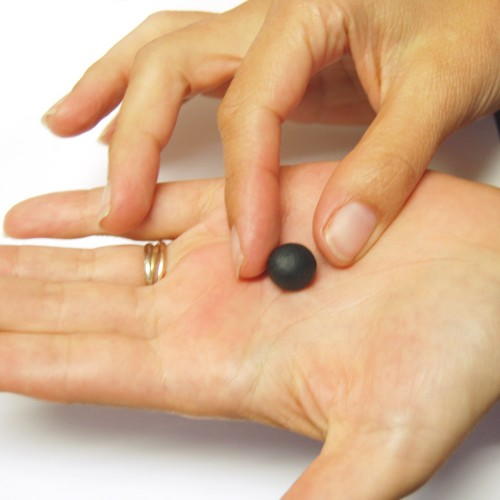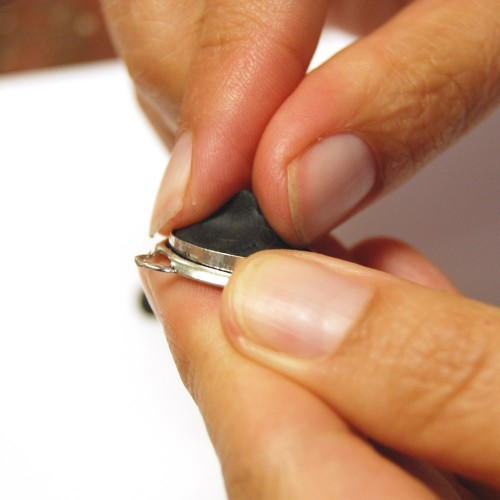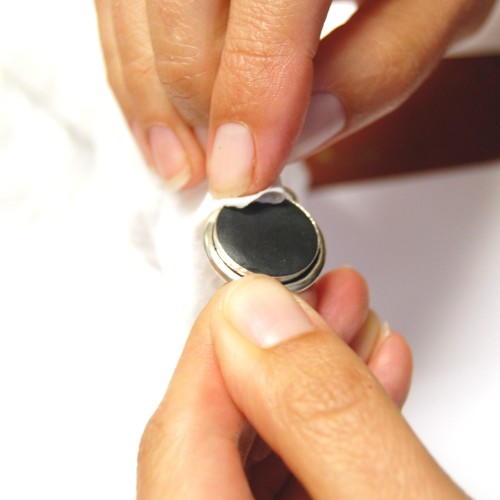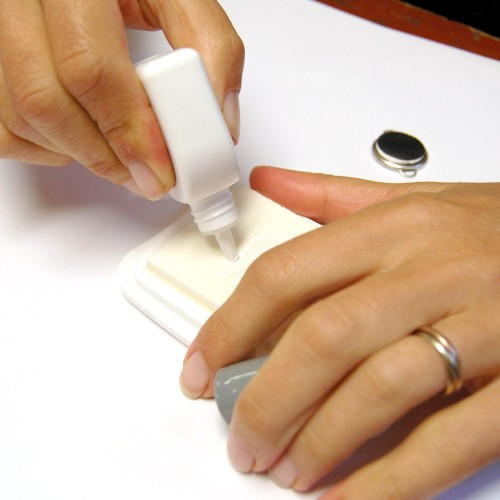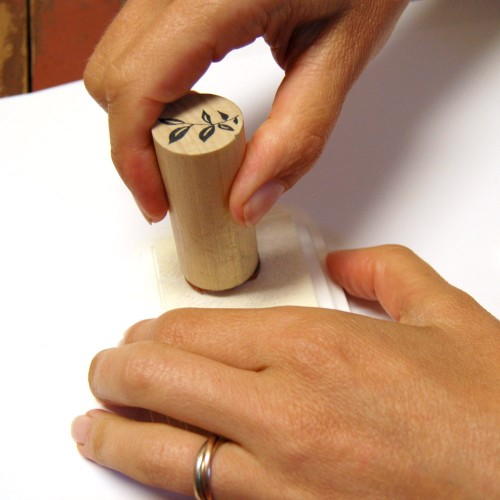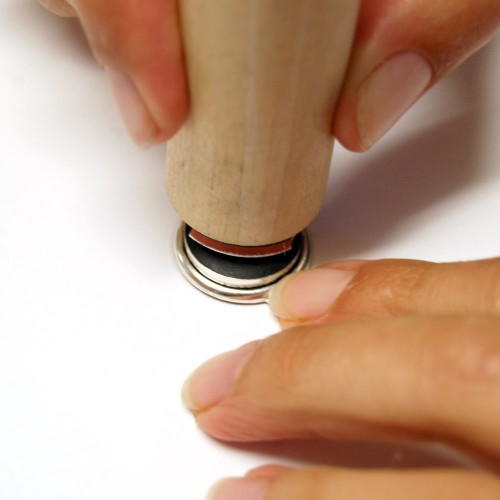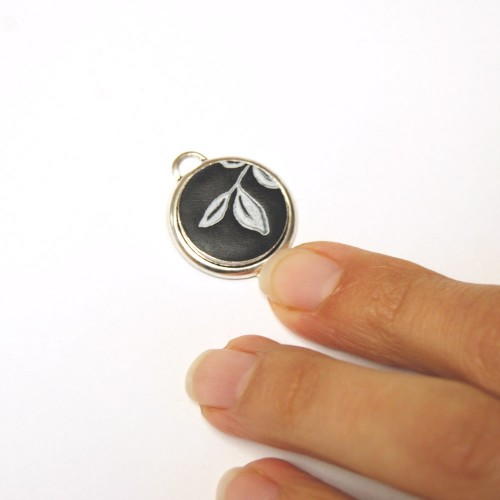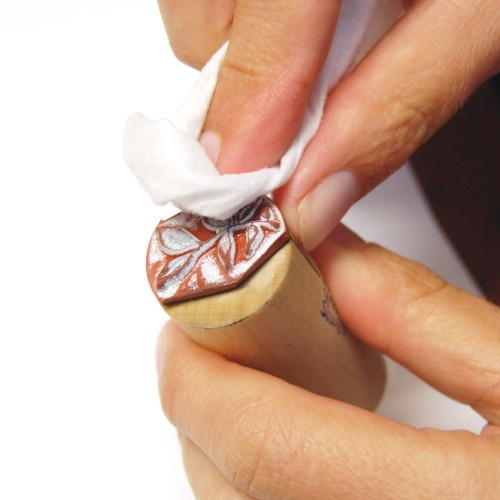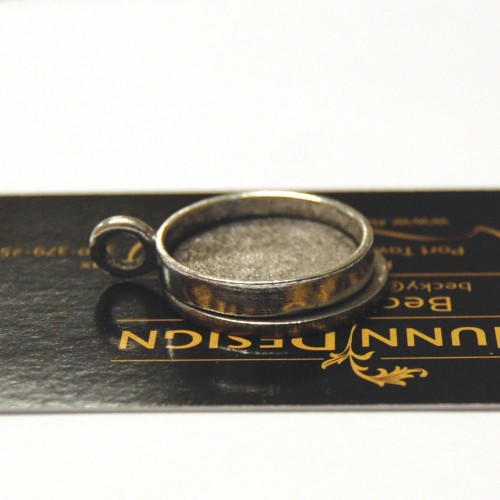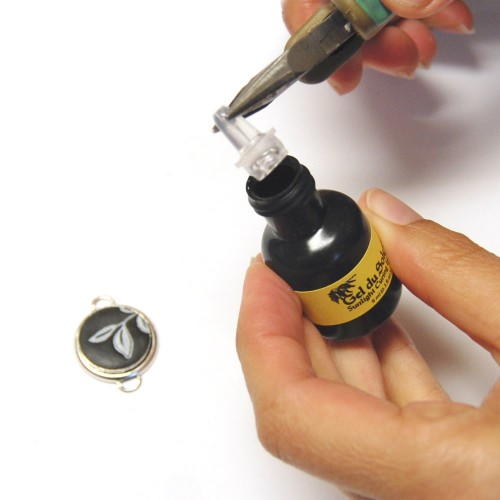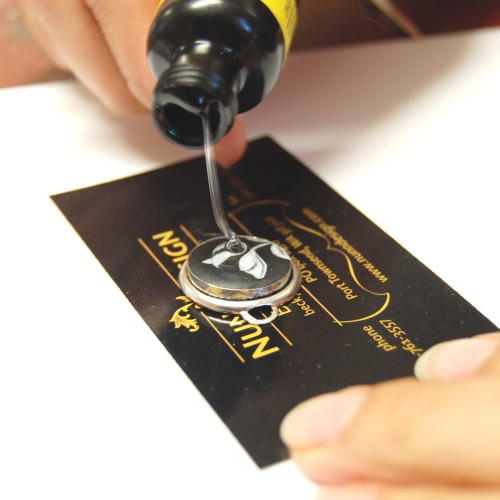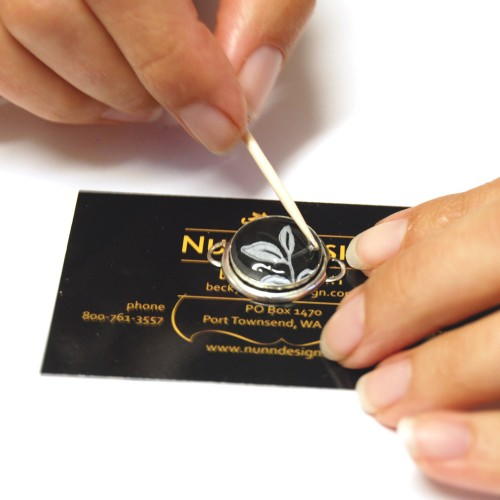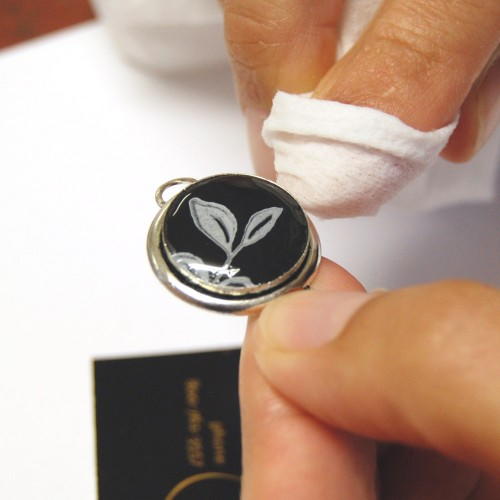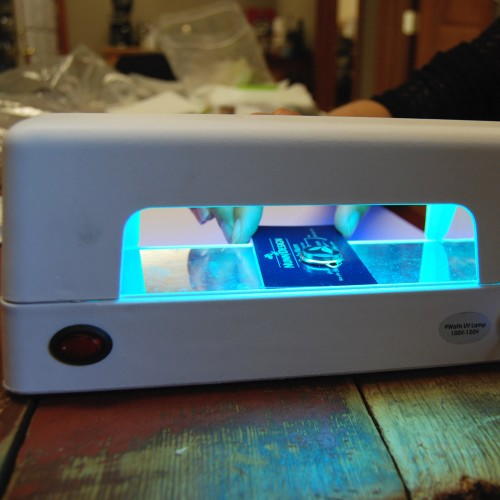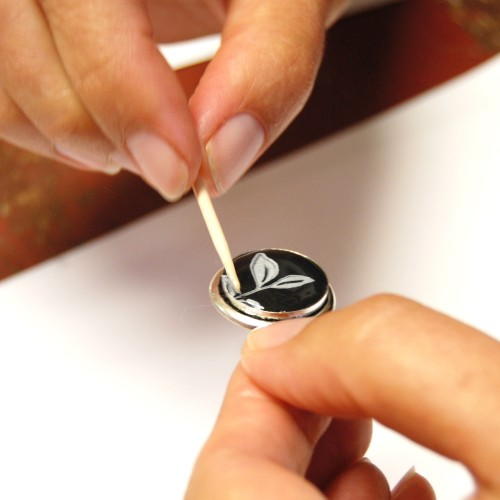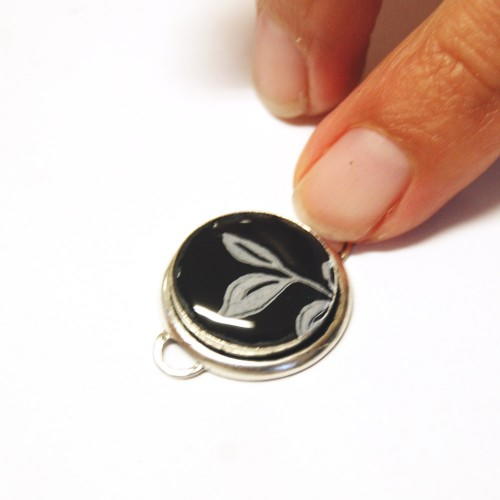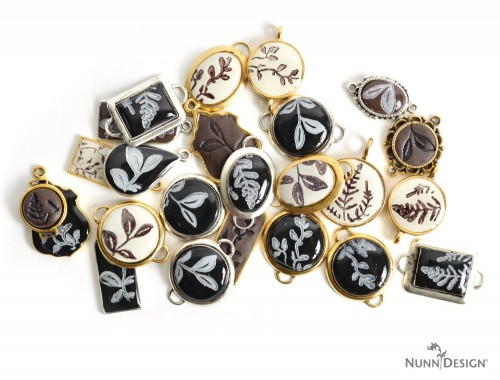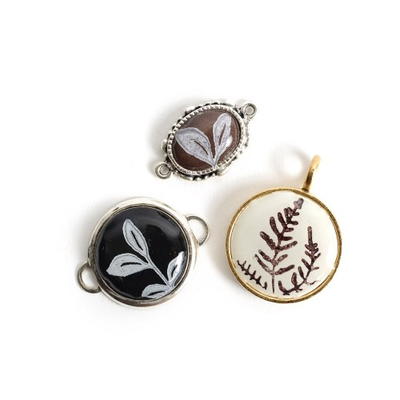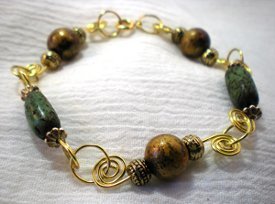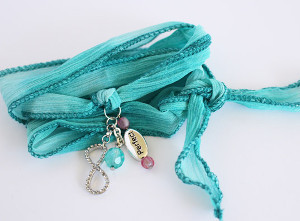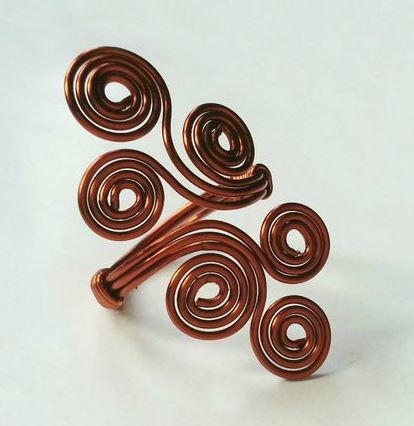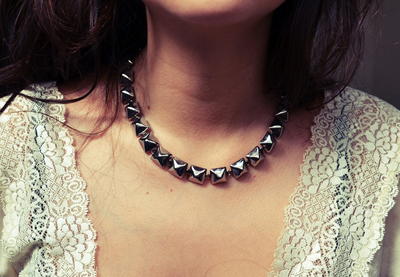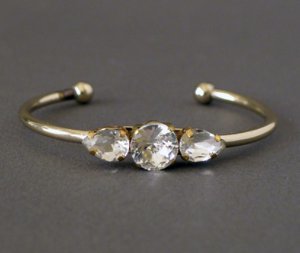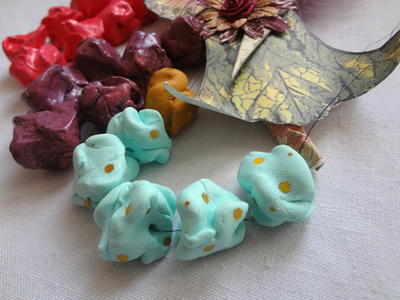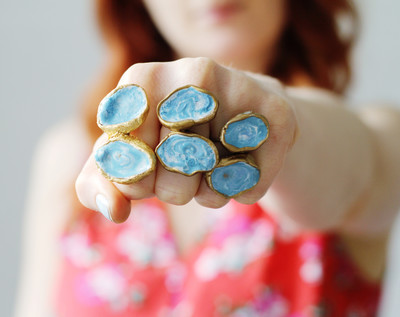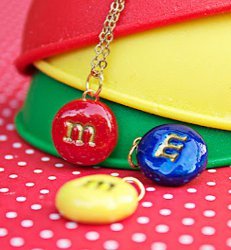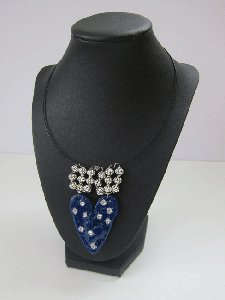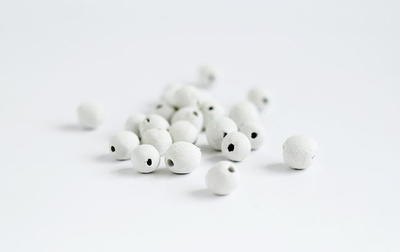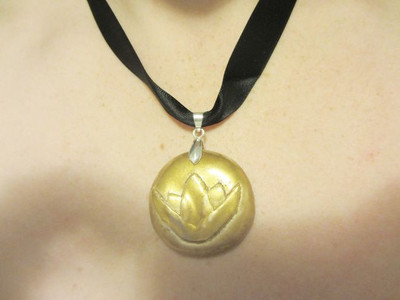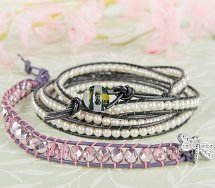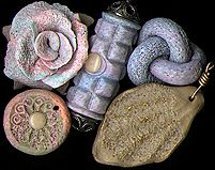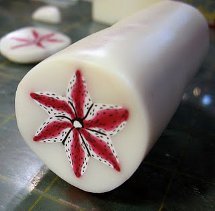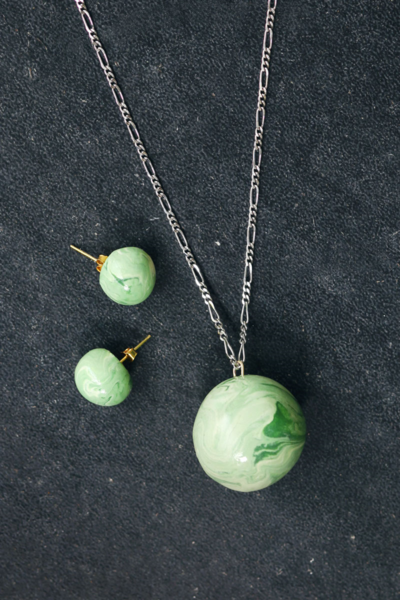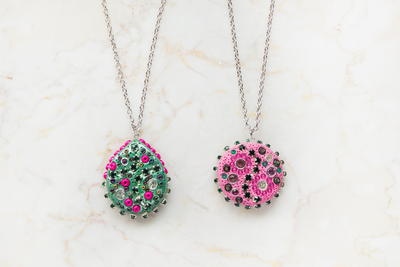Rubber Stamp Faux Porcelain Pendant
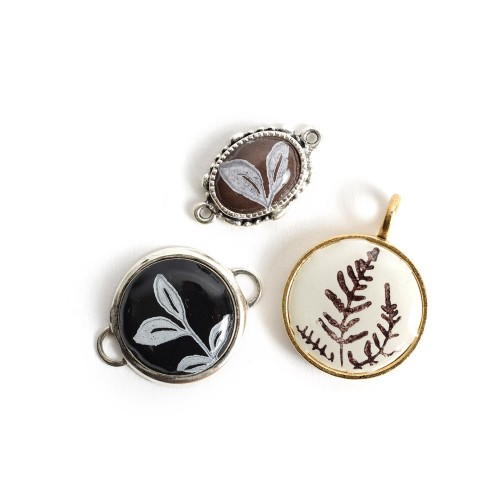
Learn how to make a Rubber Stamp Faux Porcelain Pendant, and it will soon become your go-to DIY gift idea! Made with epoxy clay, resin, and rubber stamps, these little pendants can be used in all kinds of DIY jewelry designs, from charm bracelets to pendant necklaces. Using a rubber stamp allows you to create these pendants with just about any print you like. Check out these step-by-step instructions to see how to make your own epoxy clay jewelry using standard rubber stamps!
Project TypeMake a Project
Time to CompleteWeekend project
Bead Project TypeNecklace

Materials List
- Crystal Clay
- Gel du Soleil
- Nunn Design Findings UV Lamp
- Rubber Stamps
- Ink
- Wet wipes
- Toothpicks or headpins
- Timer
- Business cards or card stock Q-Tip
Add the Crystal Clay into Bezel
-
Follow the manufacturer’s instructions for the handling and mixing of the Epoxy Clay-Crystal Clay. For mixing the Epoxy Clay-Crystal Clay, it is best to wear your gloves. Depending on the size of your bezel, pinch off enough clay to create two equal sized balls of Part A and Part B and blend together fully until the clay is no longer marbled and uniform in color. You have approximately 90-120 minutes of working time before the clay starts to harden, so take your time. Once the clay is thoroughly mixed, remove your gloves to make it easier to work with the clay.
-
Roll the thoroughly mixed Epoxy Clay-Crystal Clay between your palms until it forms a smooth round ball. Press the ball into your bezel and create an even smooth surface by patting down the clay with your fingers. You will want to have your clay flush even to the edge of the bezel. If you put too much clay in the bezel, the uv resin when applied will overflow and you will have clean up to do. If you do have too much clay, pinch off your excess and pat down your Epoxy Clay-Crystal Clay until clay is even with the rim and continue to pat until you have a smooth surface.
TIP: Make sure your clay is flushed to your side edges and there are not any gaps between your Epoxy Clay-Crystal Clay and the bezel. In order for the Gel du Soleil to cure, ALL of the Gel must be exposed to UV light. If we have some seeping into the crevices, the piece will not cure. -
Using a wet-wipe, clean up any excess Epoxy Clay-Crystal Clay that might have been left on the jewelry finding. The Epoxy Clay-Crystal Clay hardens like cement, so cleaning it up now and being tidy as you go makes the process easier and the results so much nicer.
Apply the Rubber Stamp
-
Ensure that your inkpad is nicely inked so that you have an even coverage on your rubber stamp. I like to test my impression by stamping onto a sheet of white paper prior to actually stamping on the Epoxy Clay-Crystal Clay. Once you are all inked up, place your rubberstamp upright over your epoxy filled bezel. Press down gently into the clay, creating a stamped image. If you don’t like how your image looks stamped on the Epoxy Clay-Crystal Clay, you can pinch off the stamped surface and add some additional clay to bring up your surface to be even with the side edge of your bezel and stamp again until you have it just the way you like it.
-
Allow the Epoxy Clay-Crystal Clay to dry for at least 12 hours.
TIP: It is always a good idea to remove excess ink from your rubberstamps prior to storing them.
Apply the Gel du Soleil UV Resin
-
If your bezel has a bail, you will want to place a quarter underneath the bezel, allowing the surface to be level. Place your bezel onto a business card or a piece of card stock. This will aid you in transferring the bezel into the UV lamp once it is filled with Gel du Soleil.
-
Pop the nozzle off of your bottle of Gel du Soleil with a pair of needle nose pliers (if using the 5/16 oz bottle). Removing the nozzle will make is easier to pour the Gel du Soleil and limit excess bubbles in the resin.
TIP: I like to place my top from the Gel du Soleil onto a piece of plastic so it won’t get the oily resin all over my work surface. -
Pour a very small drop of Gel du Soleil onto the surface of the Epoxy Clay-Crystal Clay. It is always best to under pour your resin and to continue adding to it, then to over pour and have to clean it up. Use a toothpick to move the Gel du Soleil around the surface, making a nice even coat. You will also keep a look out for any bubbles that you might have in your resin. If you do have a bubble, you can move it around with your toothpick and hope that it naturally pops. But if it is a stubborn cuss, you can light a match and put it over (not touching) the surface of the resin. The heat will make the air expand and the bubble will pop. If you want to have a higher dome on your piece, add an addition drip of the Gel du Soleil. When you are finished pouring the Gel du Soleil into the bezel, place the nozzle back onto the bottle and screw on the top.
TIP: If you do over pour your Gel du Soleil (hey, it happens!), use a Q-Tip to remove the over spill. -
If you have any excess Gel du Soleil on the bezel edges, use your wet wipe and Q-Tip to remove it. Once you expose the Gel du Soleil to the UV light, it will start to cure instantaneously, so make sure that you have all excess Gel du Soleil off of the sides.
-
Turn on the UV Lamp and transfer your business card with the bezel laying on the top, into the UV light. Make sure that your business card is level so that the Gel du Soleil will cure in a nice even dome and not all squished to one side or the other. Allow the piece to cure for 20 minutes.
TIP: To allow multiple pieces in the UV light tray at the same time, you can remove the business card just minutes after you have placed the bezel in the UV light. -
When your time is up, remove your bezel and inspect the Gel’s surface. If you had some gaps on the edge, you can add more resin and cure again. If you have any dust, you can sand down the surface with fine grit sand paper. The surface will be frosted from the sanding, but once you pour on the Gel again, it will be clear.

